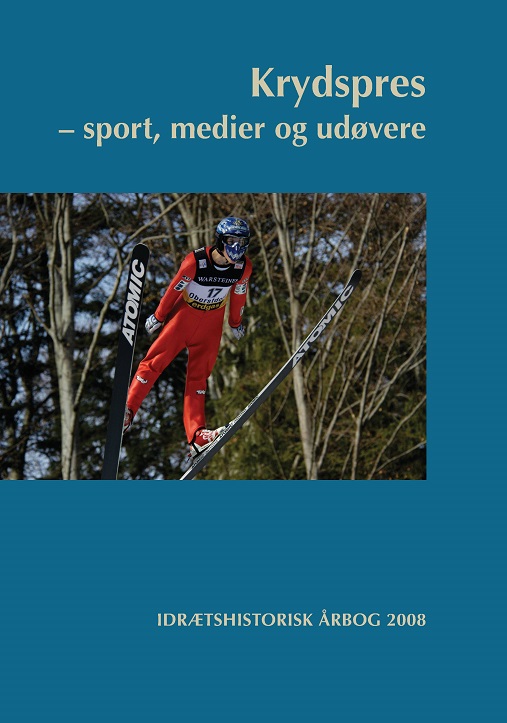Den brede vitalisme - køns- og kropsdyrkelse i den vitalistiske kunst i Danmark i begyndelsen af det 20. århundrede eksemplificeret ved fire værker
DOI:
https://doi.org/10.7146/ffi.v24i1.31654Resumé
Artiklen undersøger om den vitalistiske kunst er domineret af en mandighedsdyrkelse og om forholdet mellem kunstnernes liv og deres værk har haft betydning for den vitalistiske interesse. Dette gøres med udgangspunkt i fire kunstneriske værker.
Sarah Huss Jønsson: The cultivation of gender and body within the vitalistic art in Denmark in the beginning of the 20th century.
Vitalism was a cultural current that emphasized the cultivation of the sensuous human body in close contact with nature. It found expression in philosophy, art and the broad body cultures in the period 1890-1945. The cultivation of the vitality was influenced by the development of the modern society around 1900, which changed materially, mentally, economically, socially as well as in physical culture. In exchange for Christianity, which slowly lost its authority, the vitalists found the meaning of human existence in the cultivation of the active body and outdoor life, while the cultivation of nature – due to the influence of modern science – was put in connection with the human health. After 1945 the ideas of vitalism faded away, probably because of Nazi-Germany`s use of a distinct cultivation of the human body and instinct. Within the last decade it has been viewed by the historian Hans Bonde that there exists a significant cultivation of manliness in the vitalism of art, as it is seen in the vitalism of sports and gymnastics. Furthermore it is also claimed by the scholar Lise Præstgaard that the representation of genders in the vitalism of art is affected by the biological view on gender that was dominating at that time. Therefore the genders are claimed to be pictured in dichotomy: man is mainly seen as the rational and active gender, woman is mainly seen as the soft and sensuous one. The purpose of this article is to examine whether these above theses can be seen in such a distinct way in regard to the vitalism of art? Or should it be viewed in a more nuanced way? Finally the article sets out to examine whether there is a possible connection between the lives of the artists and their description of the genders in their vitalistic works. The leading cultivators of vitality in Denmark were a group of painters called »the Hellenists« (1894-1903). Inspired by the old Greeks they gathered each summer to explore the mix between outdoor painting and gymnastics – all naked. After 1900 vitalism was expressed in a wider sense by the painters J. F. Willumsen and Oluf Hartmann and by the sculptors Kai Nielsen and Rudolph Tegner in their respective works such as »En bjergbestigerske« (»The mounteneeress «) (1904), »Jakobs kamp med englen« (»Jakobs fight with the angel«) (1908), »Vandmoderen« (»The water-mother«) (1919-1920) and »Mod lyset« (»Towards the light«) (1909). Beside the effect of the cultivation of the body and nature in modern society, the artists also very much seem to be influenced by their private lives in their description of the genders in their vitalistic works. When it comes to Willumsen, Tegner and Kai Nielsen they all fell in love in the period when they started to express themselves in a vitalistic way. In Willumsen´s »En bjergbestigerske « this was expressed through an emphasis on the beauty and independence of the woman and the greatness of nature. In Tegner´s creation of »Mod lyset« his vision of the healing forces of the sunlight seems to affect him. Here the vitalism is seen in the lofty placement of man, women and child and their naked voluminous, muscular bodies and expressive movements upwards, which put them in touch with the life-giving sunlight. Kai Nielsen´s love for the woman and the children was inspired by his own family and influenced the vitalistic expression in »Vandmoderen«. Here the naked, sensuous and fertile woman is in close contact with a lot of lively naked children, which is underscored by its connection with the life-giving water and the children´s activity. Hartmann represents the cultivation of the »homoerotic« element in painting. For Hartmann it is seen in »Jakobs kamp med englen«, which expresses the passion, instinct and intensity of vital and powerful men´s bodily fight. This inspiration Hartmann might have got from his painting teacher, Kristian Zahrtmann, who was homosexual and a cultivator of manliness. It is seen that the woman – and not only the man - can be seen as the active gender, and also that the cultivation of women and children as well as youth and manliness is a defining factor in vitalism. Therefore this article does not entirely reject the above theses on the cultivation of the genders in the vitalistic art. It rather wants to speak for a modification of the theses.

